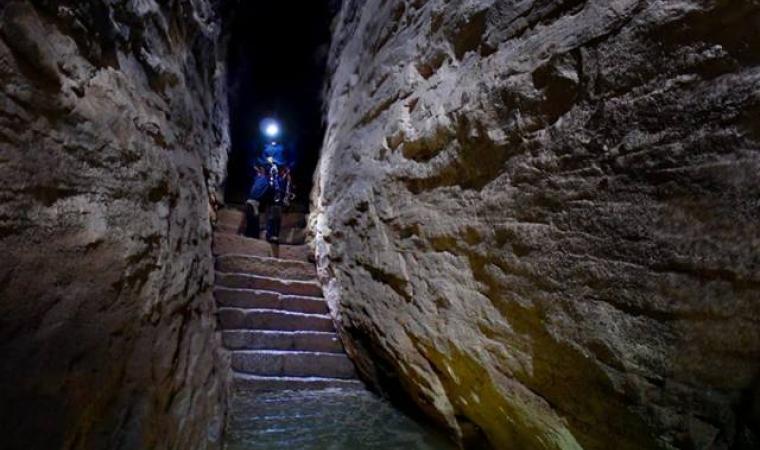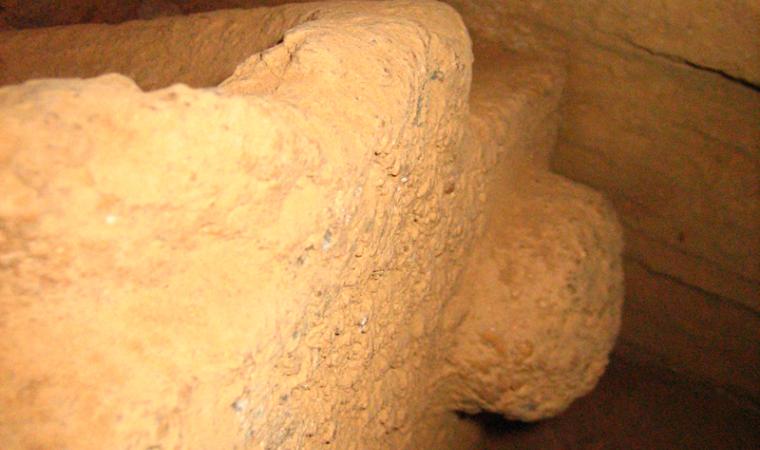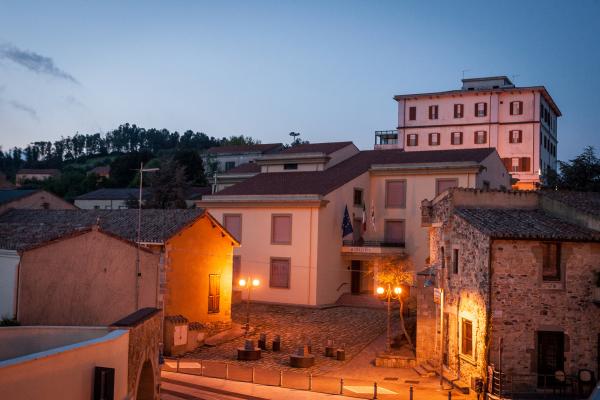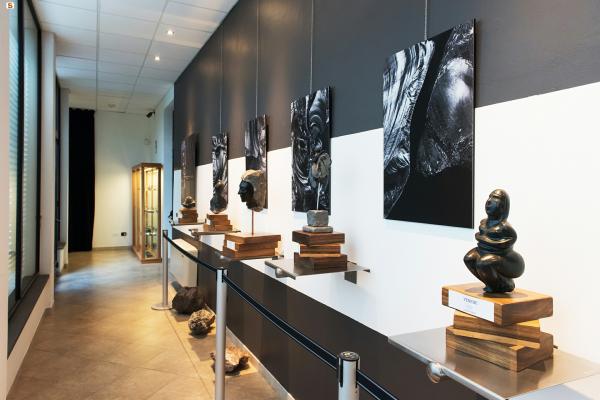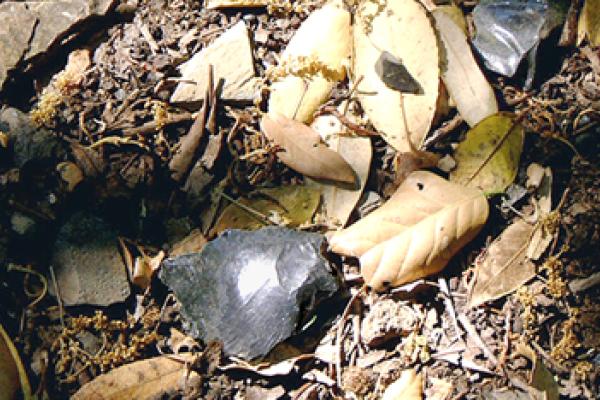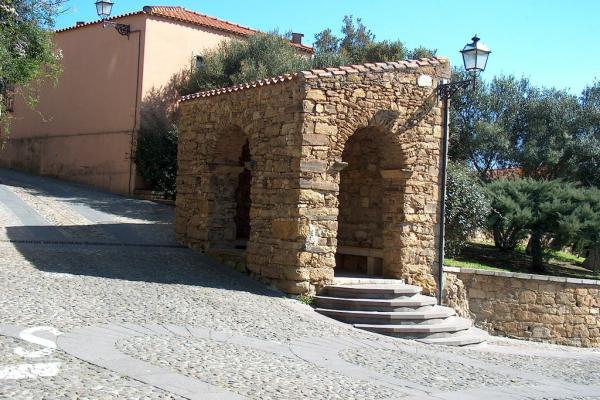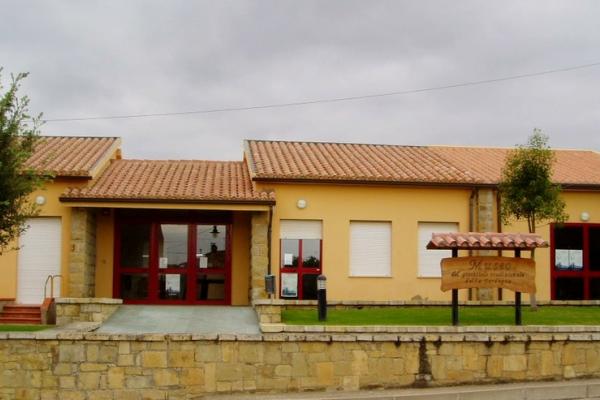In the captivating ‘volcanic’ scenario of the Park of Monte Arci, near the basalt ‘peak’ of sa Punta e’ Santu Marcu, in the territory of Morgongiori, sa grutta ‘e is caombus (cave of the doves) opens up and is a ‘rift’ in the rock - technically a joint - that creeps into the depths of the earth. The crevice, which is 150 metres long and a metre and a half wide, has been known to archaeologists since the middle of the 20th century: the first to cross the entrance and descend the crag, after reaching the bottom of the rift, were amazed: they found a perfectly-preserved basalt stone staircase, squared and one metre wide, consisting of three flights, two visible (with 24 and 22 steps) and the third covered by debris, interrupted by two landings. The steps meander along the crack in “an underground space branching into narrow, winding walkways”, as the ‘father’ of Sardinian archaeology Giovanni Lilliu defined it.
Rainwater collects at the base of the ramps. All the steps are made from two blocks of basalt hewn ‘to measure’ and installed by inserting a wedge-shaped block between them. In some of them, there are circular grooves, which can be interpreted as cupules with a purificatory function, while on others there are mammillary reliefs, attributable to the Mother Goddess, similar to those in the Nuragic, well and mégaron temples and in the Tombs of Giants. The mysterious atmosphere, the symbolism and the architectural structure, very similar to those of the sacred wells, suggest without hesitation that it was an underground temple dedicated to water worship and perhaps dates back to the Late Bronze Age (14th-12th century BC). It was called Scaba ‘e Cresia (the church steps). Shortly thereafter it was looted by grave robbers. Today, it is considered one of the most important Nuragic monuments in upper Marmilla and the largest well temple on the Island. It is a mysterious and little-known site: entry is currently reserved for expert speleologists only, through natural passages, because the soil accumulated following a landslide blocks the original entrance, which gave direct access to the steps. In the open air, a few dozen metres from the gate, there is a circular tholos building. Today, it is almost three metres high (originally covered with a false dome), with a diameter of over five metres, and is known as Funtana de su Prantu (fountain of tears). It is probably part of the sanctuary, closely connected to the staircase and the well, and intended for the priests involved in the worship, who celebrated sacred rituals there. The walls jutting out in the room are made of large basalt blocks; five niches run along the perimeter, which can be interpreted as cabinets, as in the meeting huts of su Nuraxi in Barumini and those of the Sanctuary of Santa Vittoria in Serri. Sa Scaba ‘e Cresia stands out perhaps due to a connection with the divinities of the Underworld. Finds and traces of sacrifices demonstrate that it was a great centre of worship. The influx of pilgrims lasted for over a millennium: it was reused in the Punic-Roman era as a sanctuary in honour of Demeter, as shown by the discovery of oil lamps, ceramics, coins and objects made of gold and bone. It is probable that a Nuragic complex linked to the temple emerged around it.
Not far away, at an altitude of 800 metres, are the Trebine Longa and Lada, two volcanic fossil tunnels, and the pine forest of is Benas, an oasis amidst springs, waterfalls, caves and vertical walls, populated by wild ponies, weasels, martens, buzzards and falcons. Alternating with the greenery are the dark colours of basalt and obsidian, ‘black gold’ in the prehistory of the Island. The beautiful rock sculpture called ‘Head of the Warrior’, shaped by wind and water, is not to be missed. Moreover, the very name of Morgongiori means ‘place of stones’: it is a small village of trachyte and basalt houses, famous for its culinary speciality, lorighittas (fresh ring-shaped pasta), and for its textile craftmanship. It is also surrounded by large stones worked in prehistoric times: in Prabanta you will see the menhir su Furconi and the domus de Janas sa Sala and su Forru, Neolithic monuments linked to Luxia Arrabiosa, the fairy-witch of folk tales. Among the complex nuraghi scattered throughout its territory, the su Trunku de is pillonis is of considerable importance.





